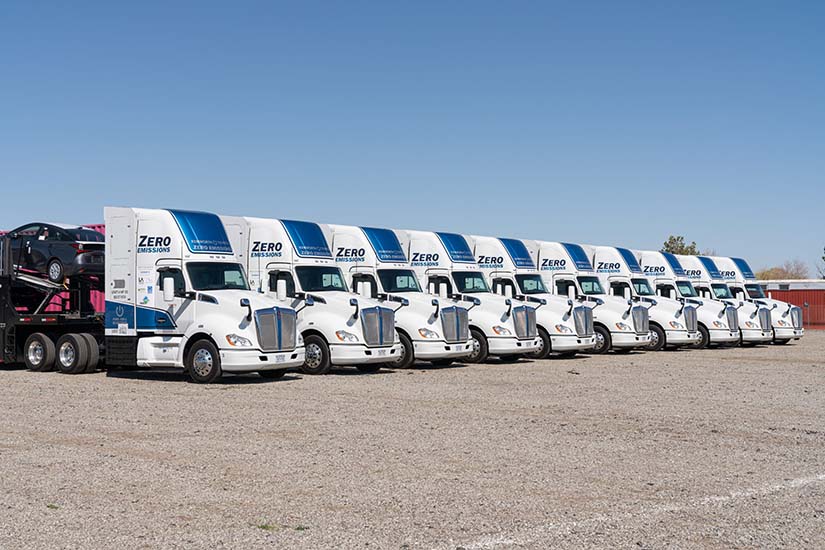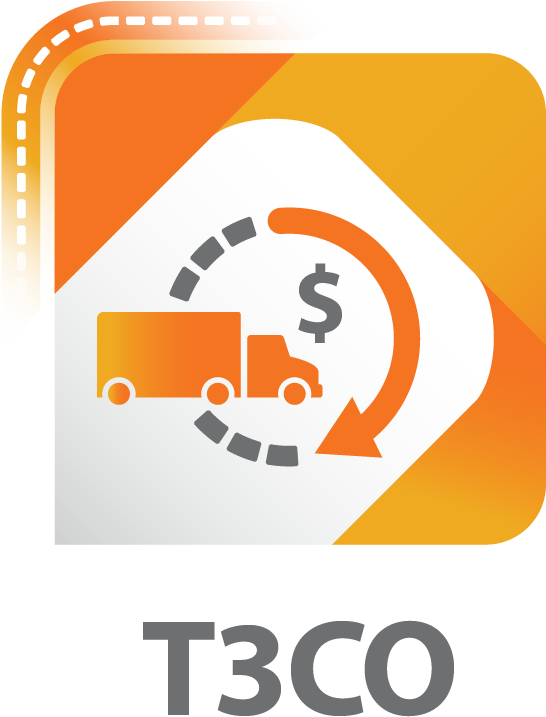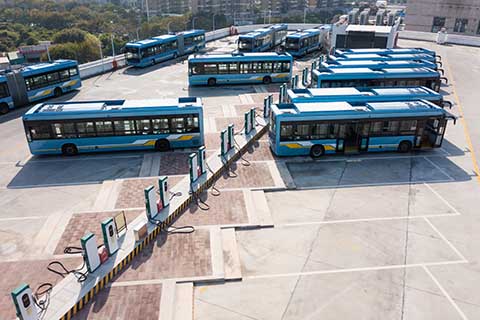NREL's Commercial Electric Vehicle Cost-of-Ownership Tool Is Best in Class—And Free

Commercial vehicle owners stand to gain a lot from the transition to zero-emission vehicles (ZEVs). With lower maintenance and energy costs and the potential for generous tax credits and rebates, ZEVs can save businesses money over the long run.
Unfortunately, the math behind a transition to ZEVs gets complicated quickly. Unlike diesel vehicles, which have long provided a “one size fits most” solution for commercial fleets, ZEVs are much less standardized. Their total cost of ownership (TCO) can change based on a wide array of variables, from the size of their battery to the price of electricity and the time it takes to recharge their batteries. Fleets and manufacturers can be left wondering which vehicle is the right fit for their operations—and how much it really costs.
Now, researchers from the National Renewable Energy Laboratory (NREL) have released a new version of the Transportation Technology Total Cost of Ownership tool, known as T3CO—the most sophisticated open-source commercial vehicle TCO tool available today.
T3CO enables fast analyses that can provide comprehensive insights into the life-cycle costs of decarbonized vehicles, from upfront investments and operating costs to the opportunity costs that can be presented by zero-emissions commercial vehicles. As fleets worldwide accelerate their transitions to electric vehicles, T3CO is ready to guide cost-effective purchasing decisions.
“I believe in realism,” said Alicia Birky, an NREL commercial vehicles researcher who led the tool’s most recent developments. “When researchers, manufacturers, and fleet owners are making decisions about what vehicles to invest in, they need a total cost of ownership analysis with a level of detail that hasn’t been possible in the past.”
T3CO, Birky said, “is our way of giving researchers and other decision makers the best possible tools for understanding how to meet a fleet’s needs with new vehicle powertrains and what trade-offs they might see with different technologies.”
Install the T3CO Python package directly from PyPI. Download the full source code on GitHub. Access the T3CO documentation website.
T3CO Is Fast, Accessible, and Free
While T3CO has been in use at NREL for years, a rebuilt, user-friendly version is now available to the public as a free, open-source tool. The full model documentation is available online, and a new quick-start guide can help users rapidly begin generating results.

"Anyone with Python knowledge can install T3CO and begin to create their own analyses,” said NREL’s Harish Panneer Selvam, a commercial vehicle technologies researcher who designed the tool’s new technical features. “We’ve restructured the whole tool to make it as useable and accessible as possible.”
T3CO has always provided powerful cost capabilities tailored to a vehicle’s specifications, thanks to its integration with NREL’s Future Automotive Systems Technology Simulator (FASTSim), a rapid powertrain simulation model. Now, it has a host of new features.
Among them is a batch mode capability, which allows T3CO to run tens of thousands of vehicle simulations in a short period—without requiring the use of a supercomputer. In addition, a built-in optimization module allows users to size vehicle components to meet performance and operational requirements at minimum cost.
“T3CO’s optimization toolbox trades off the value of different energy saving approaches, like aerodynamics and lightweighting, against the cost of larger motors and batteries,” Panneer Selvam said. “It’s able to consider thousands of vehicle specifications to find the least expensive combination that meets the user’s needs.”
This means users can simultaneously assess a vehicle’s performance and analyze its life-cycle costs to find a custom solution. T3CO’s flexible framework allows users to define a “scenario” of their choosing, including the vehicle model, operational conditions, and financial circumstances.
Most importantly, T3CO’s ability to estimate opportunity costs has been significantly refined.
The tool includes three categories of costs:
- Capital costs, or upfront expenses such as purchasing a vehicle and paying taxes
- Operating costs, or ongoing expenses such as maintaining, insuring, and recharging or refueling a decarbonized vehicle
- Opportunity costs, or the less obvious, “soft” expenses of operating a decarbonized vehicle—such as lost productivity when vehicles are charging or fueling, and the possibility of reduced payload capacity due to the weight of an advanced vehicle.
It is the last category—opportunity costs—that makes T3CO unique. NREL’s pioneering approach to estimating the costs of operating a decarbonized vehicle is novel compared to other TCO tools.
“It's easy to figure out how much it costs to repair a vehicle and how much it costs for fuel, and then add it up and provide a TCO. That's not what T3CO does,” Panneer Selvam said. “We estimate a customized TCO for a specific vehicle, in a specific location, and for its specific operations.”

Those operations, Birky and Panneer Selvam emphasized, include not just a vehicle’s typical use, but also its use on unusually high-intensity days. In other words, T3CO can capture the full variety of operations a vehicle might need to perform over a life cycle and calculate its cost accordingly.
To accomplish this, the model leverages NREL’s Fleet Research, Energy Data, and Insights (FleetREDI) platform and flagship Fleet DNA database, which serves as the U.S. Department of Energy’s (DOE’s) largest body of real-world, in-use, high-resolution vehicle operational data. Being able to account for unusual operating days can completely change the TCO calculations, Birky said, and can help identify the right decarbonized vehicle for a specific application.
While the calculations can quickly get complex, according to Panneer Selvam, “For us, ‘complex’ is not a bad word.”
In fact, these complex challenges are perfect for national laboratories like NREL. Providing easy-to-use tools that can address highly complex problems is one way the laboratory continues to accelerate the transition to sustainable technologies.
T3CO Is Ready for Action
Decarbonizing entire commercial fleets takes time—but it can be accomplished faster when the most cost-effective strategy possible is applied, because every dollar stretches further. T3CO is primed to guide manufacturers, fleet operators, and researchers through the process.
T3CO can:
- Provide insights into the relative merits of ZEV technologies for a particular use case. For example, it can help users determine whether a hybrid, battery-electric, or hydrogen fuel cell electric vehicle is the best fit for certain operations, identify the right ZEV battery size, and even find the ideal cost for individual ZEV components in order to reach cost parity with conventional vehicles.
- Identify how a vehicle’s operations affect its TCO. Rather than using “representative” data to approximate how a vehicle is driven, T3CO can use real-world data on vehicle duty cycles. These insights into a ZEV’s actual range of operations can allow users to fine-tune their understanding of a ZEV’s TCO.
- Determine how new technologies might affect vehicle TCO. As new charging technologies like dynamic wireless charging pick up speed, T3CO can help users understand the cost implications. For instance, users with access to in-road charging may be able to purchase a less expensive ZEV equipped with a smaller battery.
- Chart out a phased approach for vehicle decarbonization. T3CO can pinpoint the vehicles in a fleet or specific routes that can be easily replaced with today’s ZEVs. On the other hand, using technology progress projections, it can also help users determine whether they should hold off on electrifying other vehicles until new technologies hit the market.
This information can prove valuable for commercial fleets making long-term investments into new fleets, as well as researchers focused on finding the best pathways to widespread ZEV adoption.
After all, while the math is complex, the conclusion is simple: Making the best insights available to the widest user base possible will only help accelerate the clean vehicle transition.
Learn more about NREL's sustainable transportation and mobility research and its specific focus on commercial vehicle decarbonization. And sign up for NREL's quarterly transportation and mobility research newsletter, Sustainable Mobility Matters, to stay current on the latest news.
Interested in providing feedback on T3CO or ideas for future collaborations? Direct your input to [email protected]. Bug reports and feature requests are welcome through GitHub.
Last Updated May 28, 2025
